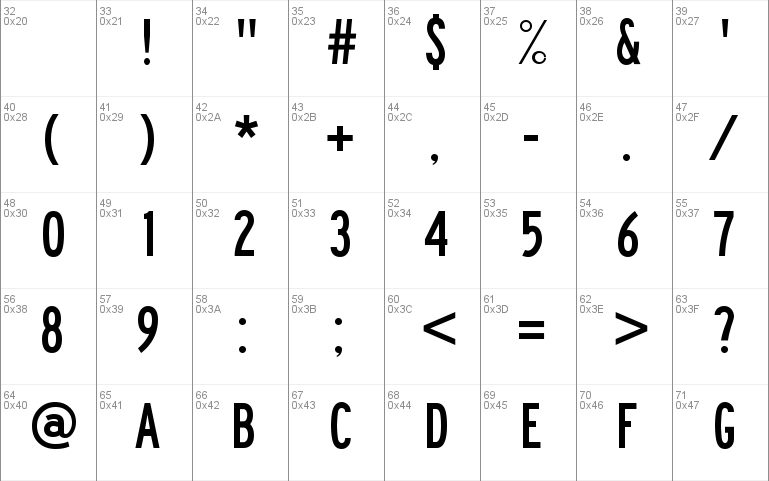

The Clearview font was developed through research. Since the issuance of the interim approval, various organizations have continued to research highway sign fonts. It is recommended that field tests are conducted with these fonts, taking into account the space that they take up, not the font size. The early research led to FHWAs issuance of the Interim Approval for the use of Clearview Font for positive contrast legends on guide signs. Overall, the base and narrow fonts took up more space than the D-altered and C-altered fonts. For the "Words Test", the smallest average font size was the base font, followed by the narrow, D-altered, and C-altered fonts. For the "Letters Test", the smallest average font size was the narrow font, followed by the base and D-altered. The four tested fonts were E Modified Base, Alpha Two FHWA E Narrow, Alpha Two FHWA D, and Alpha Two FHWA C, named Base, Narrow, D-Altered, and C-Altered respectively.įorty-two participants participated in both tests. The positive contrast consisted of a green background with a white font, and the negative contrast was a white background with a black font. There were four fonts tested, on both a positive and negative contrasts. On the second test, the "Words Test", participants would follow the same instructions, albeit with words in place of characters. Once they could decipher the character, they would click the screen and input the character shown. In the first test, the "Letters Test", participants would see a character slowly increasing in size on the screen. This study consisted of two web-based tests. The primary difference between Clearview and Highway Gothic is that Clearview has larger interstices, or internal spaces, in letters such as the lowercase e, a, and s. Understanding these five components, and the benefits of each, can lead to the betterment of the font design on highway signs. Legibility has five different components: retro-reflectivity, irradiation, luminance, contrast, and font design. It was reinstated two years later, in 2018. This font received interim approval in 2004, which was removed in 2016 due to ambiguous results from studies as to whether it was more beneficial than Highway Gothic. In the 1990s, a new font was created, Clearview, to help combat the negative effects of Standard Highway Alphabet. This, however, is extremely unlikely, since increasing the font size would also entail an increase in the physical signs lining roadways. One study found that its legibility could greatly improve if it's size was increased by 20%. Recently, more studies have been conducted to improve the overall legibility of Highway Gothic. In the 1980s, new retro-reflective sheeting introduced on American roadways caused Highway Gothic to be more difficult to read, due to the light "halo" effect caused around the letters, or halation. Since then, that standard has not changed, with all signs following the norm.
#Clearview font vs highway gothic font manual#
The Manual on Uniform Traffic Control Devices (MUTCD) set Standard Highway Alphabet, or Highway Gothic, as the standard font for all American roadway signs in 1966.


 0 kommentar(er)
0 kommentar(er)
